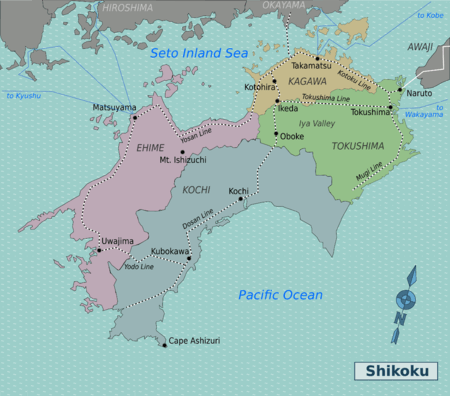Shikoku
Shikoku (四国) is an oft-forgotten island in Japan. The smallest of Japan's Big Four with around four million inhabitants, it lies to the south of Honshu. The island is thought of as a rural backwater, with few must-see attractions, but a visit there can wash away those doubts; the mountainous inner regions offer some good hiking. It is also the home of the 88 Temple Pilgrimage of the Shingon sect of Buddhism.
Regions
Shikoku literally means "four countries", and it indeed consists of four ancient countries (now prefectures) on Shikoku island, conveniently arranged around the compass points. Each prefecture also has an old provincial name, still often found in place names and listed in parenthesis below.
Cities
- 🌍 Imabari - famous for its towels and half of the Shimanami Kaido
- 🌍 Kochi — home of "Yosakoi" and many local sights
- 🌍 Marugame - One of the island's famous castle towns
- 🌍 Matsuyama — Shikoku's largest city, best known for the venerable hot springs of Dogo Onsen, inspiration of princes and poets
- 🌍 Naruto — Start of the Shikoku Pilgrimage and home of the nation's famous whirlpools.
- 🌍 Takamatsu — capital of Kagawa Prefecture, widely known for its superb udon
- 🌍 Tokushima — home of the Awa Odori festival in August
- 🌍 Uwajima — (barely) on the tourist map due to an interesting fertility shrine and wrestling bulls
Other destinations
- 🌍 Cape Ashizuri — a scenic cape at the southernmost point of Shikoku
- 🌍 Iya Valley — a remote but beautiful mountain valley
- 🌍 Kotohira — home to Konpirasan, Shikoku's most famous shrine
- 🌍 Mount Ishizuchi — the tallest peak in Shikoku
- 🌍 Oboke and Koboke — rafting on the Yoshino river
Understand
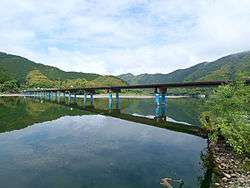
Shikoku is the smallest of Japan's four main islands. It's known for its abundant nature and pristine rivers, including the Shimanto River in Shimanto nicknamed the "last clearwater river in Japan" and the Yoshino River whose turbulent rapids make for great rafting. The island is also rich in cultural heritage. Like the rest of the country, Shikoku was also targeted by air raids in WWII and although some cultural sites, such as the home of Sakamoto Ryoma were destroyed, most of the island's heritage sites were spared. It is now home to more original castles (four) than any other region in the country and arguably the most famous pilgrimage route in the nation.
Talk
Shikoku is far enough off the beaten track that some Japanese ability, while not absolutely necessary, will come in handy. Some of Shikoku's dialects, notably Tosa-ben spoken in Kochi, are famously incomprehensible even to other Japanese.
Get in
By car
While there are highways linking Shikoku with Honshu, they are expensive—around ¥5,000.
By plane
Prefectural capitals Takamatsu, Matsuyama, Kochi and Tokushima all have small regional airports. Matsuyama has flights to Seoul and Shanghai, while Takamatsu fields a few flights a week to Seoul. For any other international destinations, you will likely have to connect via Tokyo or Kansai.
By train
Shikoku is not connected to the Shinkansen network, but there are frequent connections from Okayama on Honshu to Takamatsu and from there on throughout the island. The limited express Shiokaze (特急 しおかぜ) runs back and forth betweeen Okayama and Matsuyama roughly every hour during the day, skipping some stations on the way, if you feel like a more direct connection to that side of the island. The pace on Shikoku being what it is, don't come there expecting any of the trains to be super fast. It would also be wise to remember that train information will be in Japanese only, unlike what you may be used to from the Shinkansen. So either be sure to brush up on your knowledge of terms such as "unreserved seats" and the names of the places you're planning to visit, in kanji, or plan to ask a lot of people (which may be more fun, but may also take more time).
By bus
If you are coming from Kansai or eastern parts of Japan, buses through Awaji Island are the fastest way of getting to Shikoku.
Get around
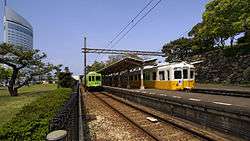
Shikoku can be difficult to get around without your own vehicle, especially to out-of-the-way natural sites sought by many visitors. Trains are infrequent in many parts, as are buses, so travelers who wish to move about the island or explore remote areas should know the timetables of whatever transport you need beforehand. Be aware that some buses only run during specific periods or on weekends and holidays only. Some travelers report feeling that it's more expensive however, this may be due to their perception of Shikoku as the "small island". In actuality, the price per distance is generally the same as more frequented routes. The time required however, is much greater. For example, the price from Okayama to Hiroshima just north on the mainland versus Takamatsu to Matsuyama is almost the same however, the Takamatsu-Matsuyama route takes more than twice as long.
During specified periods, the Yoso Line operates Cycle Trains which allow you to bring your bicycles on the train for easy and convenient cycling along the route.
By train
The JR train network connects the larger towns together fairly well, but regular trains are slow and expresses are expensive. The main lines are:
- JR Yosan Line (予讃線) on the west coast, from Takamatsu to Uwajima via Matsuyama. It also includes the Uchiko Line which connects Iyo to Ozu via Uchiko.
- JR Dosan Line (土讃線) across the center of the island, from Tadotsu to Shimanto (Kubokawa Station) via the Oboke gorge (near Iya Valley) and Kochi
- JR Kōtoku Line (高徳線) on the east coast, from Takamatsu to Tokushima
For heavy travel, JR offers the Shikoku Free Kippu (四国フリーきっぷ) , which allows unlimited usage of JR trains and buses, including limited expresses, on three consecutive days (¥16,140). If you manage to time it so that you can start on your birthday, ask for the Birthday Kippu instead, and you'll get the same deal for just ¥10,000!
For the frugal traveler, the Shikoku Saihakken Haya-Toku Kippu (四国再発見早トクきっぷ ) may be a better deal, as it offers one day of unlimited travel for just ¥2,000. There are three big catches though: it's only valid on weekends and public holidays, it's limited to local trains, and you have to buy it at least one day in advance.
Tosa Kuroshio Railway is the largest private railway on the island and connects the JR Lines to the far ends of Kochi Prefecture. Some parts of the JR network, notably the southern segment from Kubokawa to Sukumo, have split off and are now owned by Tosa Kuroshio Railway company.
Each of the capitals with the exception of Tokushima have trams that make travel around the city centers convenient.
By bus
Buses fill in the gaps in the train network and are the only means of transport in areas like Cape Ashizuri and the Iya Valley. Schedules are sparse and prices are high.
On foot
Serious pilgrims may choose to complete the 88 Temple Circuit (see Do) on foot.
See
Castles

Original Castles
There are twelve original castles left in Japan and Shikoku is home to four of them, more than any other region.
Reconstructed Castles
- Imabari Castle, Imabari
- Takamatsu Castle, Takamatsu
- Nakamura Castle, Shimanto
- Kawanoe Castle, Shikokuchuo
Shrines
- Konpirasan (Kotohira)
Gardens
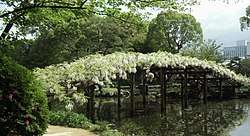
Do
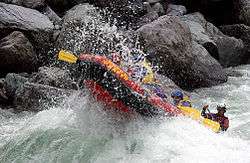
- 88 Temple Pilgrimage. The 88 Temple Pilgrimage is a famous but grueling 1,647-kilometer hike around the entire island.
- White-water rafting. The rafting in the Yoshinogawa River near Oboke and Koboke is said to be quite good.
Buy
- The most sought after present or "omiyage" after a visit to Shikoku is udon noodles. Fresh noodles can be purchased at almost any souvenir shop.
- Gifts related to the traditional pilgrims (henro) and their outfits are also popular, including a "Henro" Hello Kitty cell phone charm. These can be found in gift shops.
Eat
There aren't any "Shikokuan" foods per se, but each prefecture has something that they're famous for:
Drink
Sleep
Go next
- Chugoku - Easily accessible by train, car, or ferry, from natural sites, such as the nation's largest cave in Akiyoshidai and the sand dunes of Tottori to rich historical cities, like Hiroshima and Okayama, the Chugoku region offers a wide variety of unique travel experiences.
- Kansai - A pleasant escape from the mostly rural Shikoku to Osaka and Kobe are makes for a fun trip. With a plethora of historical and cultural sites in Kyoto, Nara, and Ise, a trip to Kansai can be enjoyable for all types of travelers.
